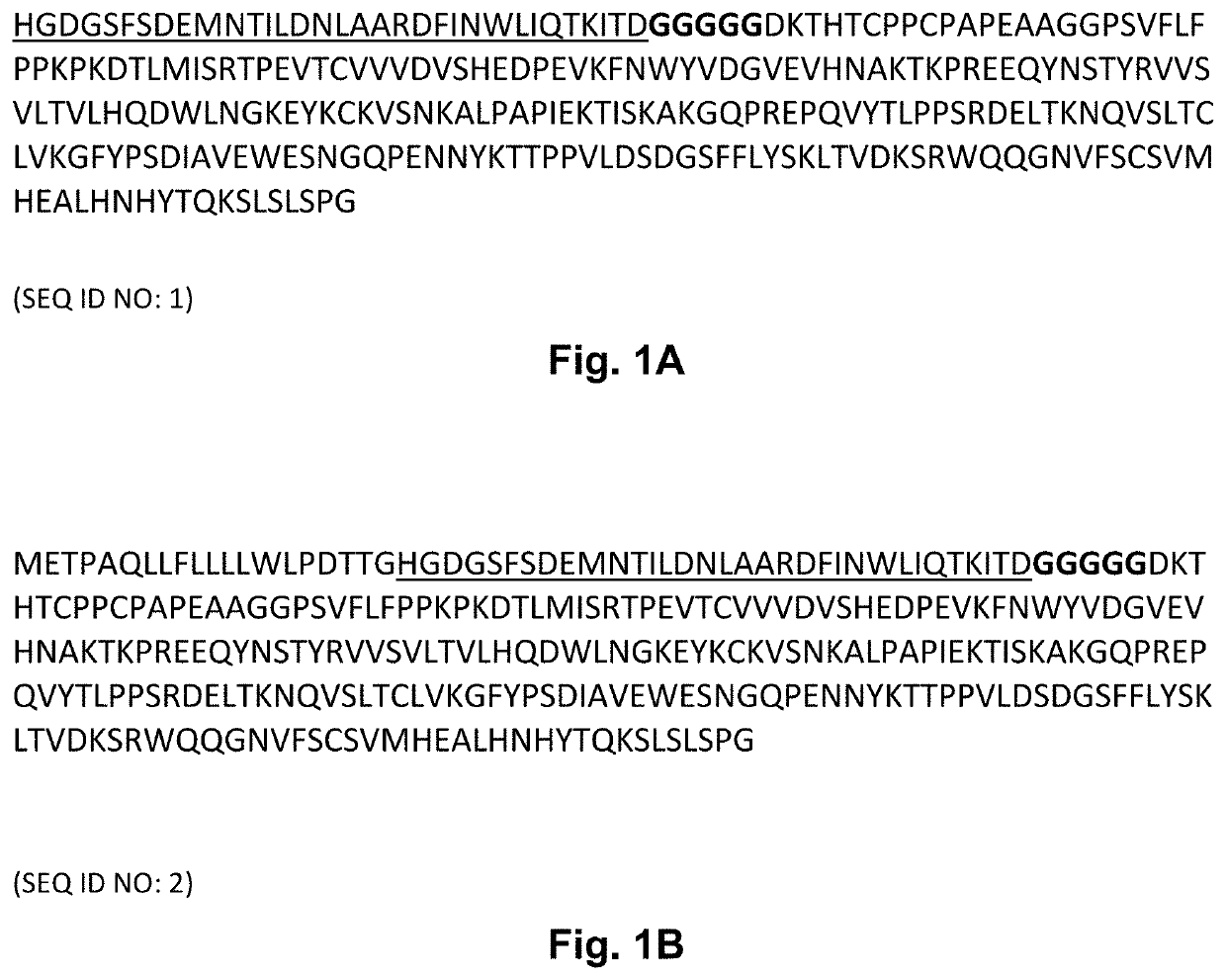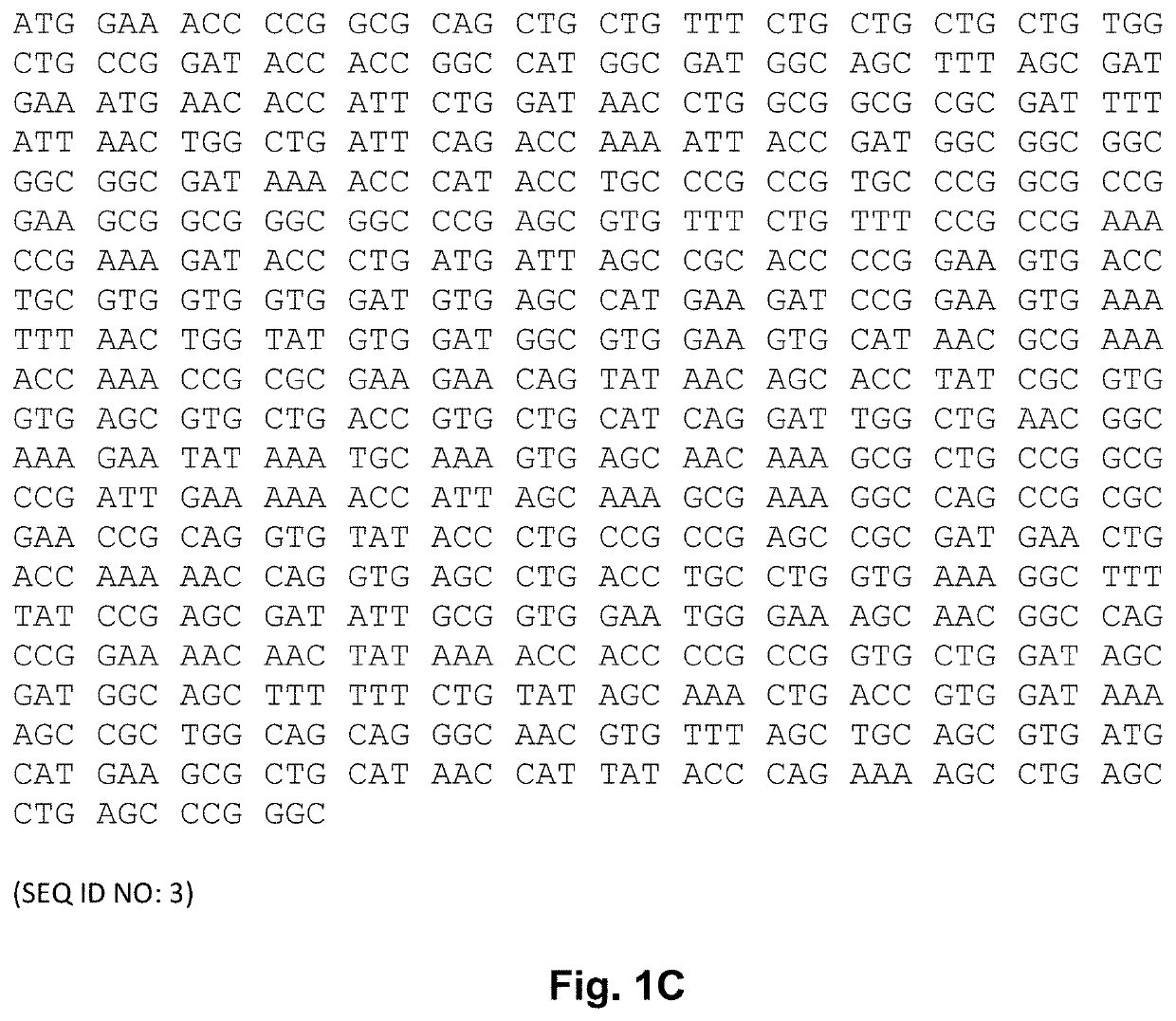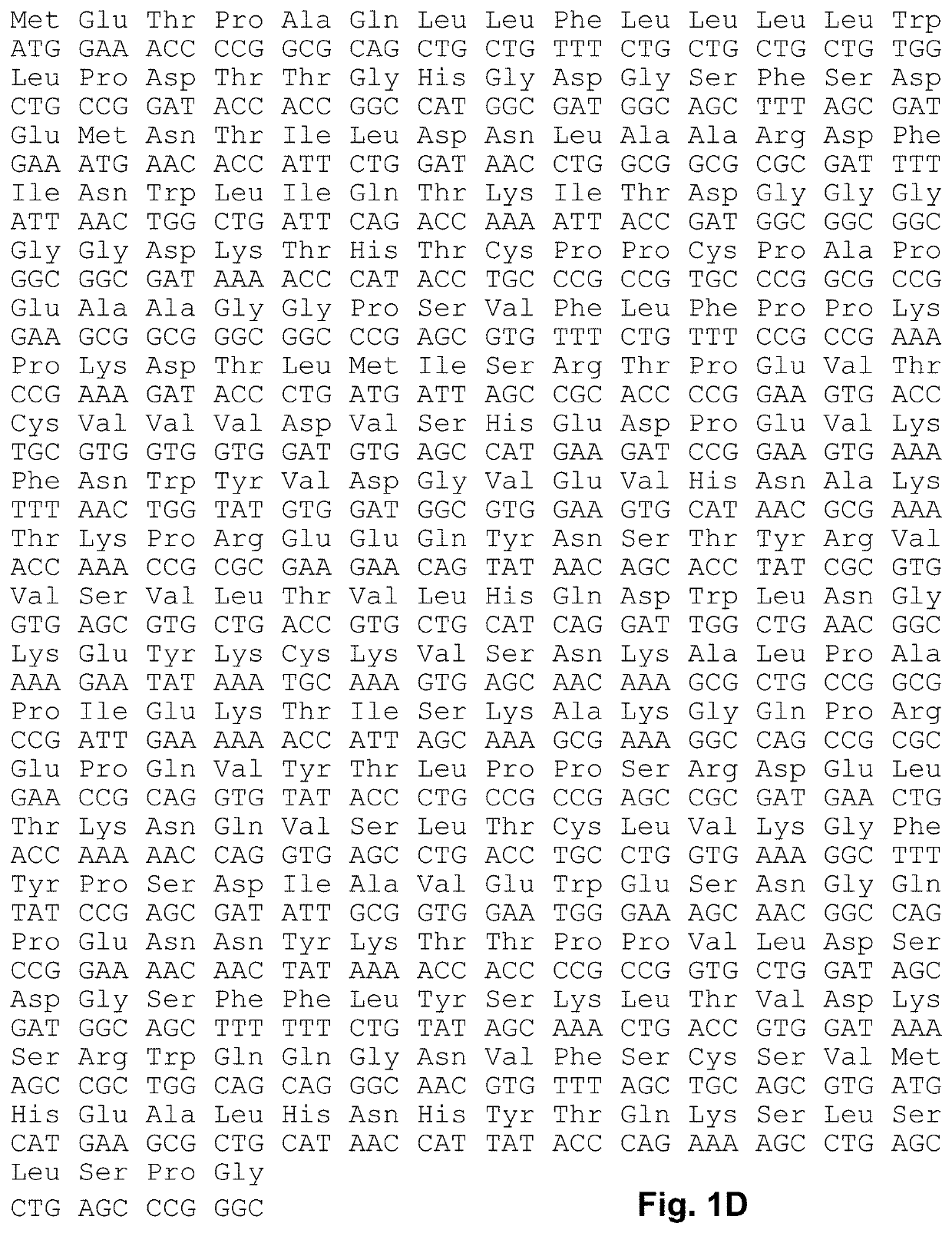Glp-2 fusion polypeptides and uses for treating and preventing gastrointestinal conditions
a fusion polypeptide and glp-2 technology, applied in the field of glp-2 fusion polypeptides and proteins, can solve the problems of high morbidity and mortality, malnutrition, dehydration and weight loss, and the inability to administer glp-2 by itself to human patients, and achieves a higher postprandial triglyceride concentration and improved absorption of fatty acids in olive oil
- Summary
- Abstract
- Description
- Claims
- Application Information
AI Technical Summary
Benefits of technology
Problems solved by technology
Method used
Image
Examples
example 1
Weight and FcRn Binding of GLP-2 Peptibodies
[0276]Binding to the Fc neonatal receptor (FcRN) allows for recycling of the molecules and leads to an extended in vivo serum half-life of the Fc fusion proteins. Recycling occurs as the molecules are passively taken into the cells and the pH of the endosomes is lower. That leads to binding of the Fc portion of the molecule to the FcRN. When the FcRN recycles back to the surface of the cell, the pH is then neutral and the protein is released back into the serum.
[0277]Binding to the extracellular domain of the FcRN was measured by surface plasmon resonance (SPR) using a Biacore system. Direct immobilization with FcRn was achieved via amine coupling of a CM5 chip with FcRn under the following conditions:[0278]i) hFcRn (expressed and purified in house) is diluted in Acetate buffer pH 5.0 to 5 μg / mL.[0279]ii) Immobilize 5 μg / mL of FcRn with target of 500 RU on CM5 chip in PBS pH 7.0[0280]iii) Final response 454 RU[0281]iv) Running buffer: PBS-...
example 2
tability Analysis
[0286]Each of the GLP-2 peptibodies was tested by determining melting temperature with nanodifferential scanning fluorimetry (NanoDSF). NanoDSF is a measurement of protein stability over a range of temperatures, with a temperature ramp employed. The stability of tryptophan is measured by fluorescence, as reflected in a ratio of fluorescence at 350 nm to fluorescence at 330 nm. From the assay, one or more melting temperatures are determined. Because a protein in a certain state is understood to have a melting temperature, the number of melting temperatures observed reflects the number of different states. GLP-2 peptibodies A, B, E, J, K, L, and M have two states, as shown in Table 2 below.
[0287]A SEC-MALS assay was performed to determine the primary state (main peak) and its molecular weight. As shown in Table 2 below, the GLP-2 peptibodies A, B, E, J, K, L, M, and O (Fc fusions) eluted at a molecular weight indicative of a dimer. The GLP-2 peptibody O (albumin fusio...
example 3
Potency of GLP-2 Peptibodies
[0288]The EC50 of GLP-2 peptibodies was assayed in vitro using the cAMP Hunter™ eXpress GLP2R CHO-K1 GPCR assay from DiscoverX. The cAMP Hunter™ assay is based on enzyme fragment complementation (EFC). In EFC assay, the enzyme donor is fused to cAMP. Increased intracellular cAMP due to GLP2R activation competes with ED-cAMP for antibody. Unbound ED-cAMP complements the enzyme acceptor to form active beta galactosidase, which subsequently produces a luminescent signal.
[0289]The CHO-K1 cell line used is overexpressing human GLP-2R (Genbank accession number NM004246.1). The peptide GLP-2[A2G] was used as a control. Cells were treated with various dilutions of GLP-2[A2G] peptide and GLP-2 peptibodies listed in Table 3. Their activities were assayed via measurement of the concentration of cAMP in the media. Sigmoidal curve fitting was undertaken to arrive at EC50 values, as shown in Table 3 below.
TABLE 3PeptideGLP-PeptibodyEC50 (nM)R2GLP-2[A2G]0.590.99A128.30....
PUM
| Property | Measurement | Unit |
|---|---|---|
| width | aaaaa | aaaaa |
| surface area | aaaaa | aaaaa |
| weight loss | aaaaa | aaaaa |
Abstract
Description
Claims
Application Information
 Login to View More
Login to View More - R&D
- Intellectual Property
- Life Sciences
- Materials
- Tech Scout
- Unparalleled Data Quality
- Higher Quality Content
- 60% Fewer Hallucinations
Browse by: Latest US Patents, China's latest patents, Technical Efficacy Thesaurus, Application Domain, Technology Topic, Popular Technical Reports.
© 2025 PatSnap. All rights reserved.Legal|Privacy policy|Modern Slavery Act Transparency Statement|Sitemap|About US| Contact US: help@patsnap.com



